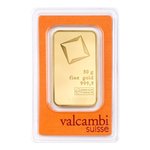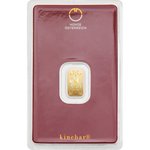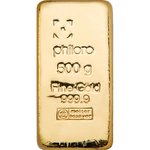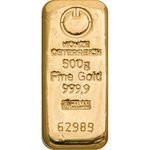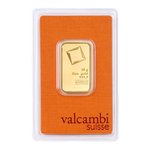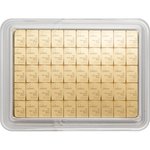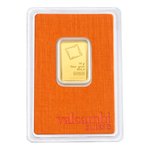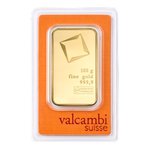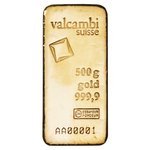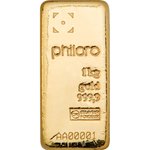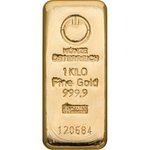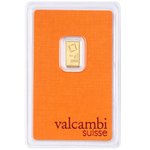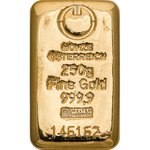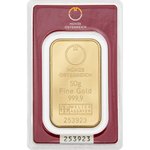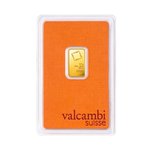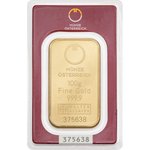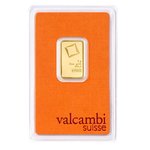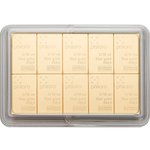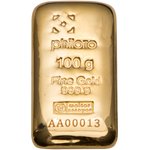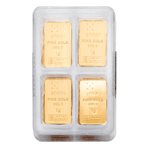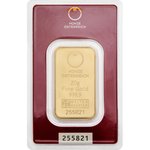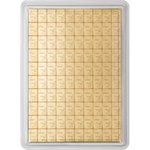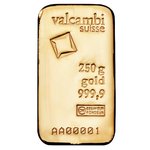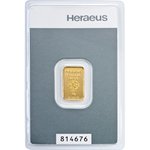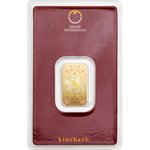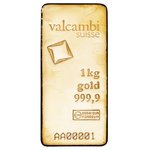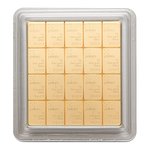Gold Bars
Reasons to buy gold bars from philoro:
philoro exclusively works with well-known, international companies, such as Valcambi in Switzerland, to ensure the high quality and authenticity of the gold bars. The gold is extracted under ethical conditions for both the workers and the environment. philoro offers a diverse range of gold bars and provides you the opportunity and flexibility to invest your wealth the way you want to.
Things to consider when buying gold bars:
The bar should have counterfeiting protection. philoro places particular emphasis on unique security features to protect against any manipulation. Bars from LBMA accredited manufacturers guarantee the highest quality and sustainability of the bar. That is why philoro only distributes bars from LBMA accredited manufacturers. Increased security measures and a suitable safe are recommended for storing gold bars in your own home. When storing gold bars externally, such as in a depot or safe deposit box, your precious metals should be fully insured and under the highest security measures.
What does the LBMA accreditation stand for?
LBMA stands for the London Bullion Market Association, which coordinates the trade in gold and silver on the London Bullion Market. Since 1919, the price for gold has been determined in London, this created a space for LBMA members. This includes international banks, manufacturers, processors, producers, and traders around the world.
Strict quality requirements must be met for a gold or silver bar manufacturer to receive a LBMA accreditation. In addition, the manufacturer must follow specific guidelines regarding ethicality.
What are the advantages of gold bars?
Gold bars are an excellent tool for diversifying your investment portfolio.
Due to the simple production and the resulting low surcharge for production, gold bars are closer in price to the pure material value, compared to gold coins, and are therefore often cheaper.
Gold bars are available in different denominations.
Unlike paper money, gold bars are not infinitely reproducible and are therefore more resistant to inflation.
They are considered the ultimate crisis currency.
Gold bars offer flexibility.
They can be transported or sold anytime, unlike other investments such as real estate.
The value of Gold bars is globally recognized.
Thanks to their insensitive surface, cast gold bars are more resistant than minted ones.
Gold bars are corrosion resistant.
Is it advisable to remove gold bars from their packaging?

Interesting Facts about Gold bars
What is the largest gold bar in the world?
The largest gold bar in the world weighs a whopping 8,000 ounces (about 226.8 kg) and has a value of about $13.1 million (rate as of January 9th, 2023). This expensive piece was produced in 2005 by Mitsubishi Materials Corporation in Japan and is officially recorded in the Guinness World Records. You can see the gold bar in the collection of the Toi Gold Mine Museum in Toi, Japan. The mine was Japan’s second most productive gold mine from 1601 up until 1965.
Are gold bars also collectibles?
Yes, indeed! Historical gold bars are extremely popular among collectors and are considered a valuable document of the history of money. The hobby is considered costly, because collectors must be willing to negotiate above the actual material value of the bar. Collectible bars are distinguished by their age, they are antique and are no longer produced, which makes them a rarity on the market.
Other characteristics include visual individuality and the method of production.
The bars should not have been minted, but cast. The cast bar, in contrast to the minted gold bar, has rounded edges and an uneven surface. Often, no stamped serial numbers are visible on the bar. Popular historical gold bars came from the production of Nathan M. Rothschild & Sons, which were produced by the London Mint Refinery from 1919 to 1967. Manual production allows the positions of the stamping to vary, giving the bars a unique appearance. Extremely rare and valuable are gold treasures in sunken ships or excavations. Rare gold finds achieve record prices at international auctions.
Are there famous gold finds?
There are numerous stories of people stumbling upon gold: some unintentionally, others made it their life's work. One such person is oceanographer and deep-sea engineer Tommy Thompson, who found the largest gold treasure in American history in 1989.
He was searching for the wreck of the SS Central America in the Atlantic Ocean. The steamship was caught in a hurricane in 1857 and sank to the ocean floor. The shipwreck claimed the lives of over 400 people and caused 21 tons of gold in the form of coins, bars, and nuggets to disappear into the depths of the Atlantic. In 1988, Thompson and his team identified the wreck on the ocean floor. A year later, the lost gold treasure was salvaged by the US government with the help of a self-built deep-sea robot.
The value of the found gold was estimated at up to $1 billion (about $3 per person in the USA) at the time. After Thompson's legendary gold find, various financiers, insurance companies, and members of the expedition team wanted their share of the treasure. However, Thompson failed to deliver the promised shares, which led to lengthy lawsuits and criminal charges against him. He became a fugitive and was finally arrested in 2015 in a hotel room in Boca Raton, Florida. After his arrest, the remaining gold from the SS Central America was sold at an auction.
How long has gold been searched for?
Gold mines for targeted gold searches have been existing for a very long time. In 2004, archaeologists discovered a Bronze Age gold mine in good condition near Sakdrissi in the country of Georgia. The facility is believed to be 4,500 years old, and therefore one of the oldest known gold mines in the world. At that time, people made jewelry from the gold, which can now be seen in various museums.
Gold bars were already being produced in 2000 BC, but due to the easier production, coins were preferred. To make the bar, gold was melted and then poured into sand forms. Nowadays, production is more modern, but the principle of the process has remained the same. The bar served as a means of exchange and payment. Only over time did gold develop into an investment. 200,000 tons of gold have been mined throughout human history (as of 2019).
